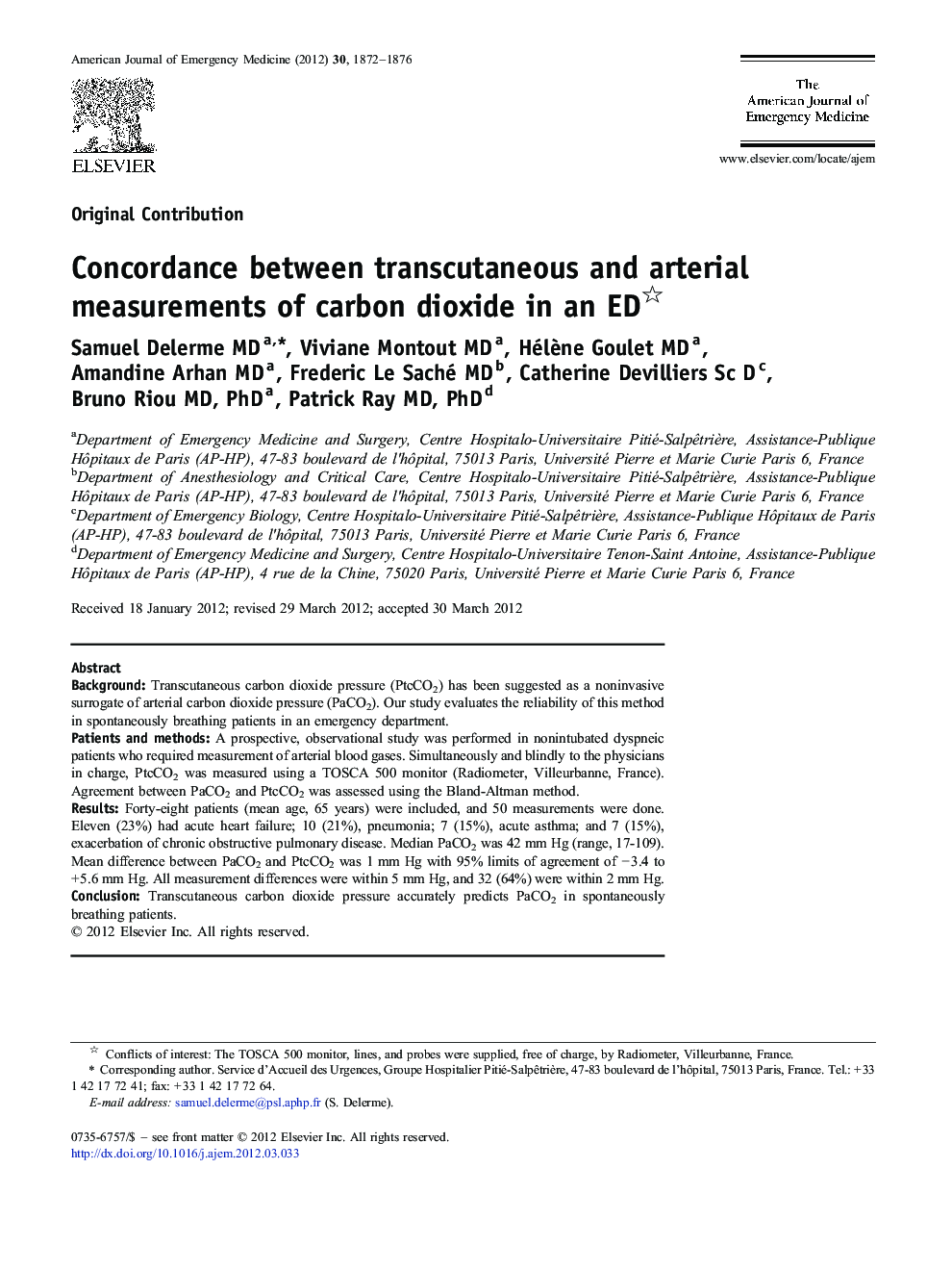| کد مقاله | کد نشریه | سال انتشار | مقاله انگلیسی | نسخه تمام متن |
|---|---|---|---|---|
| 3224908 | 1588135 | 2012 | 5 صفحه PDF | دانلود رایگان |

BackgroundTranscutaneous carbon dioxide pressure (PtcCO2) has been suggested as a noninvasive surrogate of arterial carbon dioxide pressure (PaCO2). Our study evaluates the reliability of this method in spontaneously breathing patients in an emergency department.Patients and methodsA prospective, observational study was performed in nonintubated dyspneic patients who required measurement of arterial blood gases. Simultaneously and blindly to the physicians in charge, PtcCO2 was measured using a TOSCA 500 monitor (Radiometer, Villeurbanne, France). Agreement between PaCO2 and PtcCO2 was assessed using the Bland-Altman method.ResultsForty-eight patients (mean age, 65 years) were included, and 50 measurements were done. Eleven (23%) had acute heart failure; 10 (21%), pneumonia; 7 (15%), acute asthma; and 7 (15%), exacerbation of chronic obstructive pulmonary disease. Median PaCO2 was 42 mm Hg (range, 17-109). Mean difference between PaCO2 and PtcCO2 was 1 mm Hg with 95% limits of agreement of − 3.4 to + 5.6 mm Hg. All measurement differences were within 5 mm Hg, and 32 (64%) were within 2 mm Hg.ConclusionTranscutaneous carbon dioxide pressure accurately predicts PaCO2 in spontaneously breathing patients.
Journal: The American Journal of Emergency Medicine - Volume 30, Issue 9, November 2012, Pages 1872–1876